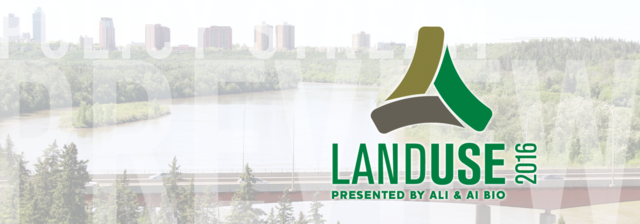Land Use 2016: Governance and Regional Planning for Sustainability

Research and consultation can inform decisions about environmental policy, but when theory must become reality, success or failure is dictated largely by the mechanisms of governance.
Across Canada and around the world, different approaches have been pursued in the development of land management policy, each calling for governments at different levels –– national, provincial, regional and municipal –– to assume specific duties. As these layers of administration cooperate, there can be gaps in responsibility, or overlaps in authority. For instance, land management legislation might not coordinate with municipal government legislation, leaving questions as to which government makes decisions in a given case.
Understanding how environmental governance accommodates –– or fails to accommodate –– the achievement of its aims is essential to the growth and success of future policy. In Alberta, this understanding can only be achieved through the examination of a single, overarching policy: the Land Use Framework.
The Land Use Framework (LUF) came into existence after years of engagement between the government of Alberta, stakeholders, and the public at large. The process began at a Land Use Conference in January of 2002, where issues related to the pressure on Alberta’s landscape were identified. Years of consultations and review followed, ultimately leading to the adoption of the LUF late in 2008, and the passage of the Alberta Land Stewardship Act in 2009.
Fundamental to the LUF are regional plans developed for each of seven regions across the province. Through these plans, the Framework is intended to identify local priorities, then shape human effects on the air, land, and water to balance economic and social goals with environmental priorities. Two of these regional plans are now completed –– the South Saskatchewan Regional Plan and the Lower Athabasca Regional Plan –– and work has commenced on the North Saskatchewan Regional Plan.
With four more plans still to come, timely questions arise: how well is the LUF achieving its environmental objectives in Alberta? Does it integrate with the province’s Municipal Government Act? How have its thresholds been set? What can we learn as it continues to evolve?
Across the United States, different regions have turned to a variety of governance structures in order to manage landscapes. In his plenary address for the Land Use 2016 policy stream Governance & Regional Planning for Sustainability, University of Colorado Denver Professor Allan Wallis will contrast the LUF with a number of alternative models, and use case studies to show what lessons might be drawn from those experiences.
An expert panel will then deliver a report card on the Land Use Framework. Including one of the architects of the LUF, Morris Seiferling, and Cold Lake Mayor Craig Copeland, this examination will provide a diverse view of the LUF’s strengths and weaknesses, and consider how it might evolve in the years ahead.